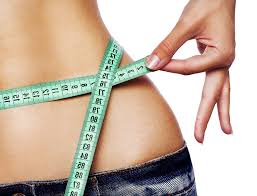How to Read Food Labels for Weight Loss Success
Anyone hoping to successfully lose weight needs to be able to read food labels. Food labels offer important details about the nutritional makeup of packaged goods, enabling you to make decisions that support your health and weight loss objectives. You may help your weight loss efforts by choosing better options, spotting nutrient-rich foods, and avoiding hidden calorie and bad ingredient sources by learning how to read food labels. This post will explain how to successfully read food labels for weight reduction, outlining important ingredients to look for and helpful advice on how to choose healthier options.
Comprehending Food Labels
It’s important to comprehend the fundamentals of food labels’ structure and content before delving into their intricacies. Typical food labels contain the following information:
Serving Dimensions
The amount of food or drink on which the nutrition information on the label is based is indicated by the serving size. To make sure you’re precisely measuring your intake and consuming the right portion proportions, pay attention to serving sizes.
Calories
A serving of food’s worth of energy is measured in calories. Since eating more calories than your body requires might result in weight gain, controlling your calorie intake is essential for weight loss. Make educated judgments regarding calorie consumption and portion sizes by using the calorie information found on food labels.
Details of Nutrients
Important nutrients including fat, cholesterol, trans fat, saturated fat, sodium, carbs, fiber, sugars, and protein are also listed on food labels. These nutrients can affect weight loss results and are crucial for general health. Keep an eye out for the levels of essential nutrients in packaged foods and pick for items that are richer in protein and fiber and lower in sodium, sugar, and harmful fats.
Value Per Day (%DV)
The percentage of a nutrient in a food serving that goes toward your daily recommended intake—which is based on a diet of 2,000 calories—is shown by the % Daily Value. To evaluate a food’s nutritional value and establish if it has a high or low concentration of a particular nutrient, use the%DV. Choose foods with higher percentages of fiber, vitamins, and minerals and lower percentages of trans fat, cholesterol, saturated fat, and sodium in your diet.
1.One way to read food labels is to start by looking at the serving size.
To be sure you’re eating the right amount, start by examining the serving size specified on the food label. Remember that this serving size is the basis for the nutritional information on the label, so modifying portion sizes appropriately is crucial for ensuring that you are getting the right amount of calories and nutrients.
2. Consider Your Calorie Intake
Next, determine the food’s energy content by looking at the number of calories per serving. Pay attention to portion sizes and try not to consume more calories than you require, especially when it comes to high-calorie, low-nutrient meals like sugary drinks and processed snacks.
3. Cut Back on Dangerous Nutrients
Examine the levels of harmful nutrients in packaged goods, such as sodium, cholesterol, trans fat, and saturated fat. When taken in excess, these nutrients can lead to weight gain and adverse health effects. To promote weight loss and general health, go for products that are lower in sodium and these harmful fats.
4. Seek out protein and fiber
Protein and fiber are crucial nutrients for weight loss because they stimulate muscle growth and repair, help with blood sugar regulation, and encourage satiety. Select meals that are higher in protein and fiber to help you feel content and full in between meals.
5. Watch Out for Sugar Additive
Watch out for added sugars that are concealed in processed foods and drinks since they can lead to overindulgence in calories and weight gain. Examine the ingredient list for words like “sugar,” “corn syrup,” “high-fructose corn syrup,” “dextrose,” “fructose,” and “sucrose” and select products with less added sugar.
6. Examine the list of ingredients
Look through the ingredient list to see if the food has any artificial substances, preservatives, or harmful additives. Select products that have shorter ingredient lists and identifiable whole-food components to reduce your consumption of processed foods and artificial additives.
7. Examine Comparable Items
When purchasing packaged goods, look for healthier options by comparing similar products. To help you reach your weight loss objectives, look for selections with less calories, fat, sugar, and sugar as well as more fiber.
In summary
Anyone hoping to lose weight successfully should learn how to read food labels. You may make decisions that support both your weight loss and health objectives if you know how to read food labels correctly. When analyzing packaged goods, pay attention to serving sizes, calories, nutritional information, % Daily Value, and ingredient lists. Select foods that are higher in fiber and protein, lower in harmful nutrients, and free of artificial additives and added sugars. You may use food labels as a tool to support your weight reduction journey and make healthier decisions that feed your body and mind with patience and determination.

